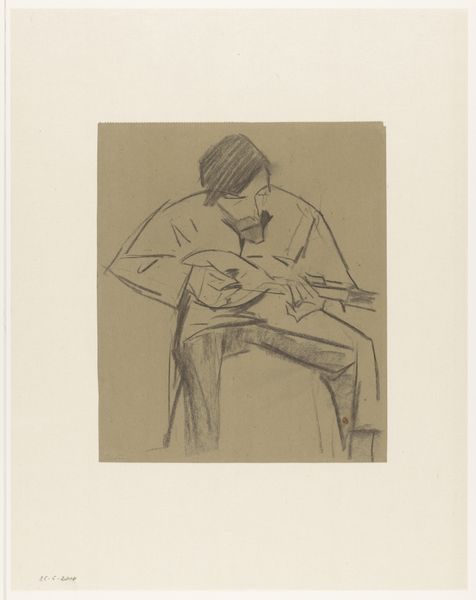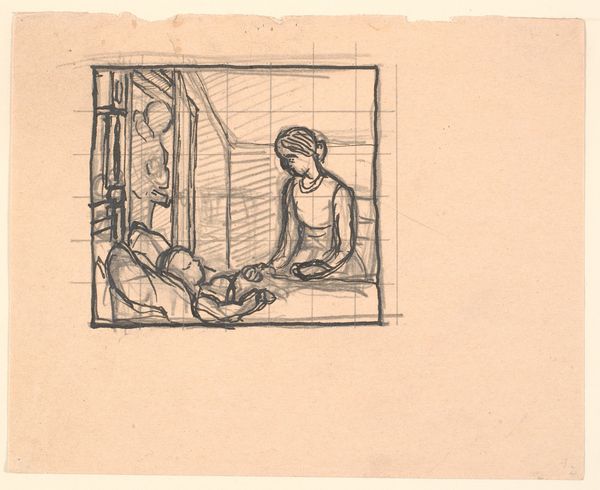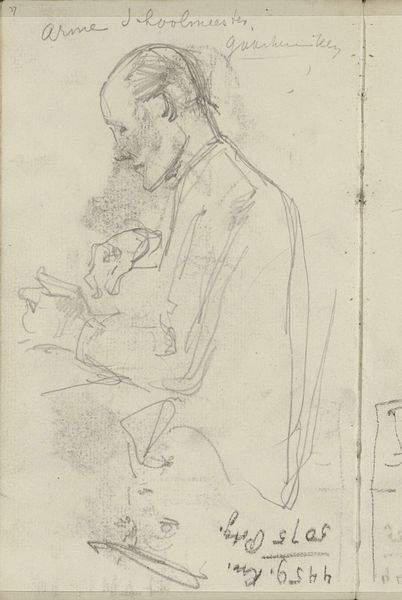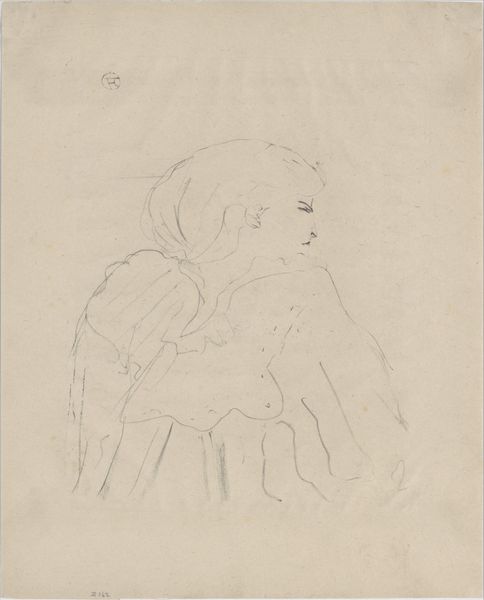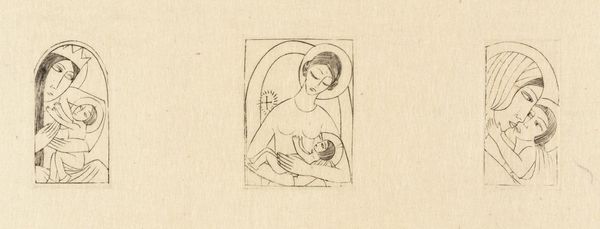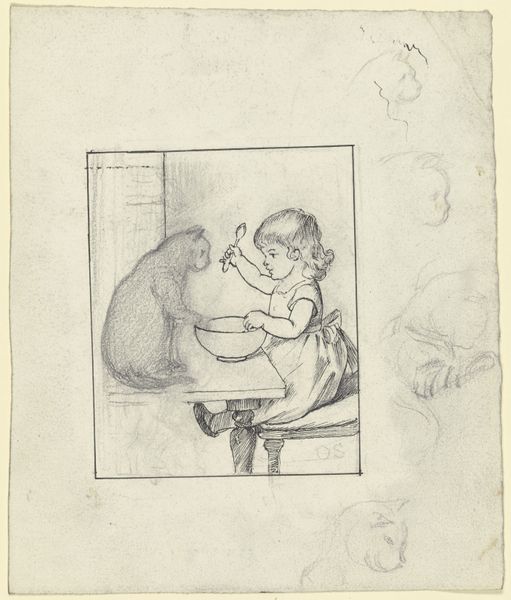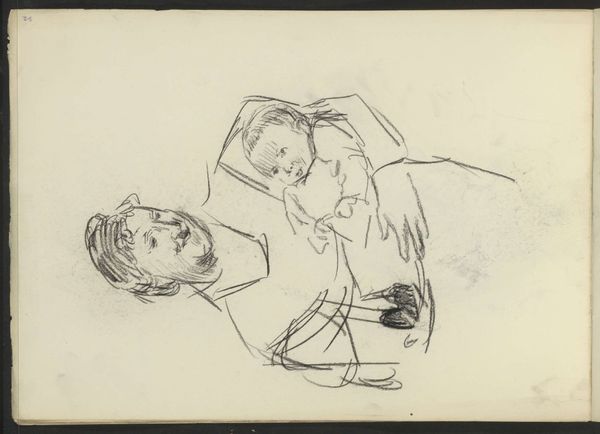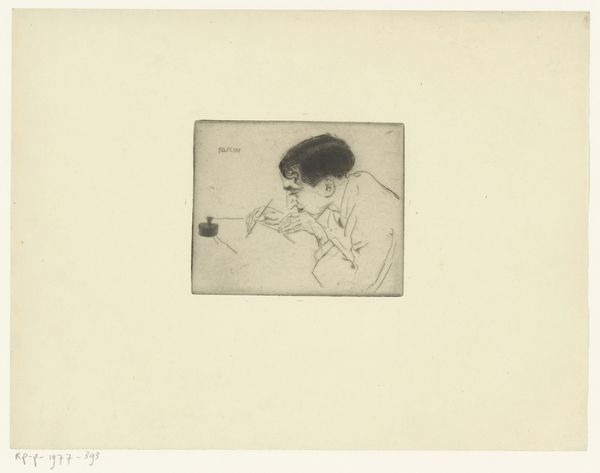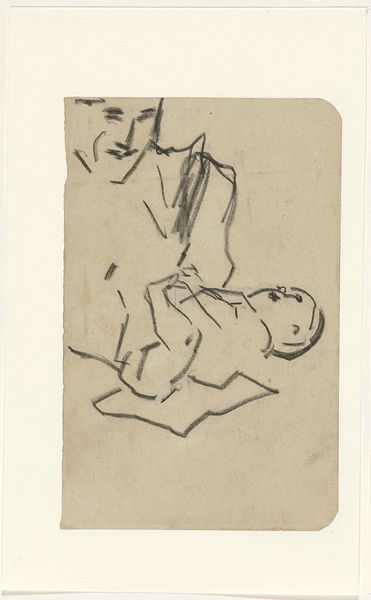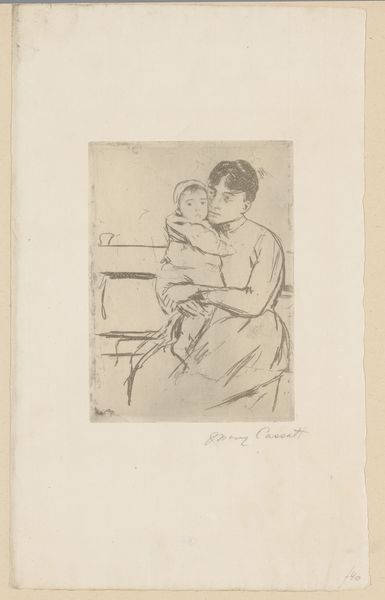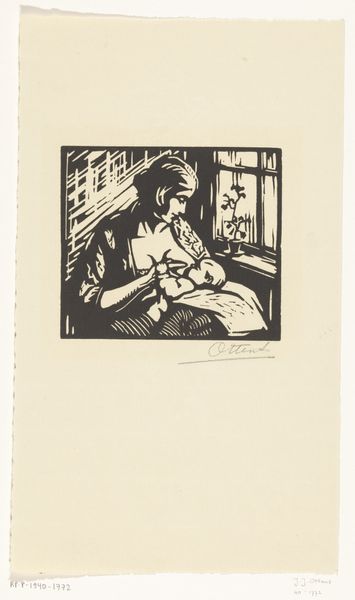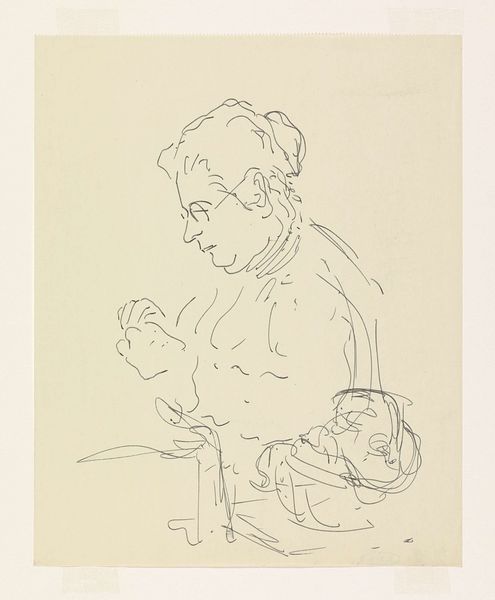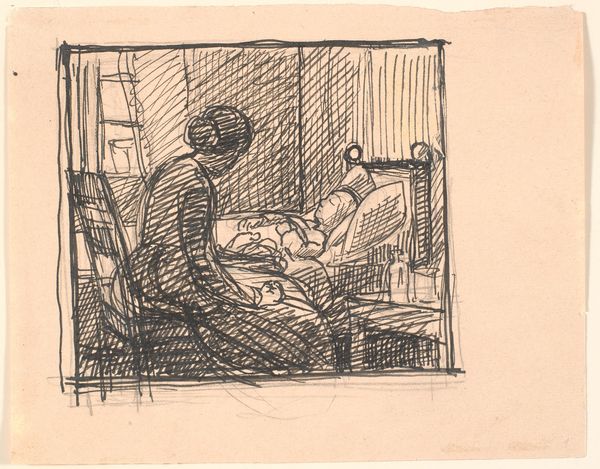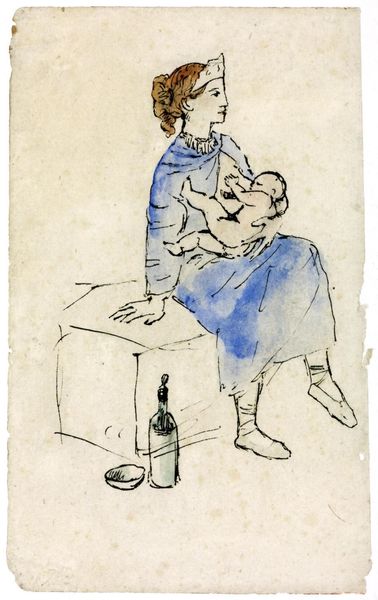
drawing, paper, ink
#
portrait
#
drawing
#
comic strip sketch
#
imaginative character sketch
#
light pencil work
#
art-nouveau
#
quirky sketch
#
figuration
#
paper
#
personal sketchbook
#
ink
#
idea generation sketch
#
ink drawing experimentation
#
intimism
#
sketchbook drawing
#
storyboard and sketchbook work
#
sketchbook art
Dimensions: height 226 mm, width 125 mm
Copyright: Rijks Museum: Open Domain
Curator: Before us, we have Frits Lensvelt’s drawing "Vrouw met kind op schoot," created around 1910 using ink on paper. Editor: The delicate lines and muted tones give it a rather somber, reflective mood. The composition feels intentionally simplistic, drawing our eye directly to the figures. Curator: Indeed. The artwork clearly delves into the realm of intimate relationships, specifically maternal affection, a common theme found within Intimism. Observe the strategic placement of figures; the woman dominates the space, enveloping her child within the curve of her arm. Editor: Absolutely. Lensvelt seems intent on capturing a specific mood, almost melancholic. But how might contemporary societal views influence the presentation of women as mothers at the time? Curator: Good question. We can assume that this domestic setting echoes the common belief that a woman’s primary role resides within the home, devoted to her offspring. This work thus operates as a quiet proclamation and subtle reaffirmation of the domesticity narrative expected during the early 20th century. But also note the use of line; economical, but precisely descriptive. The contour lines define form without resorting to shading, creating an interesting sense of flatness. Editor: Precisely, by rejecting dramatic perspectival techniques, Lensvelt creates a stylized rather than hyperrealistic domestic tableau. A narrative is woven, gently, by carefully excluding all non-essential visual information. Did this work also perhaps cater to prevailing tastes within the Art Nouveau aesthetic which prized streamlined decorative motifs? Curator: Exactly! This also provided Lensvelt with the framework to address gender constructs; consider the ornamental necklace accentuating the mother’s position as a figure of refinement within a bourgeois interior. Editor: Ultimately, the artwork encapsulates not just intimate scenes but broader social commentaries through its artful interplay of form and symbol. Curator: Agreed. The strength lies in Lensvelt’s unique fusion of tenderness and subtle structural commentary, leaving us contemplating domestic narratives.
Comments
No comments
Be the first to comment and join the conversation on the ultimate creative platform.
